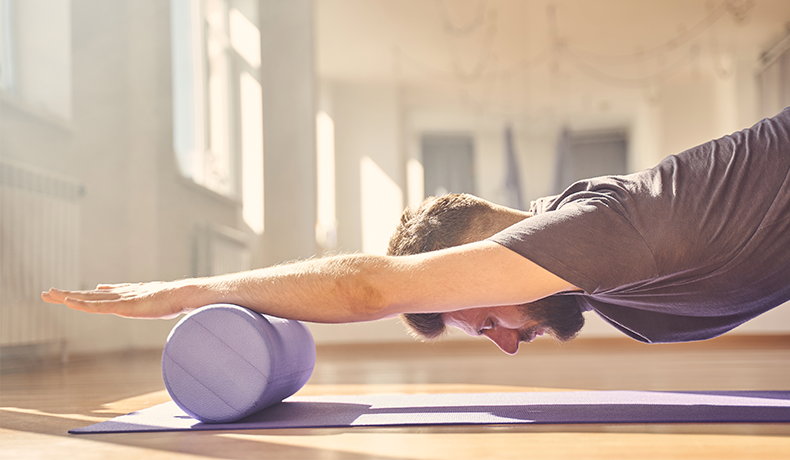
Get Rolling…
With the steady, consistent rise of chronic back pain and muscular imbalances across the US, the question often arises ‘how can this be reduced?’. Of course, sitting down all day at a desk doesn’t help at all, but that’s, in some cases, unavoidable. You’ll be surprised to learn how far a quick moment to stretch can help; and when we say stretch, we don’t mean a mere bend-over-and-touch-your-toes kinda stretch. Oh no! we’re talking about getting a hold of some toys and providing yourself with some self-myofascial release!
Yes, it is just as fun as it sounds.
Self-myofascial release (SMR) is a form of stretching in which you apply pressure with the use of hands or ‘tools’ to relax contracted muscles. By applying this pressure to contracted muscles you create a stretch reflex in the muscle fascia (the thin, elastic tissue that surrounds muscle) which provides an incredible amount of muscle tension release.
Aside from releasing all of the built-up tension from the day, SMR can work numerous other wonders when it comes to your general health. By means of creating positive length-tension relationships between muscle groups, SMR has been shown to drastically help correct muscle imbalances. This in turn improves both overall posture and performance.
Recovery time from injury or fatigue can also be decreased with controlled SMR by increasing the blood and oxygen circulation within the muscles. Inflammation is further reduced too as SMR has been shown to aid the regulation of hormones and compounds, specifically cytokines (the small proteins crucial in controlling immune-system growth, activity, and functionality)!
Injury prevention has also been associated with SMR. It is both an excellent way to prepare your muscles for intense exercise, as well as a recommended way to cool down after battle.
Have you ever felt a muscle knot deeply embedded in the muscles of your upper back or legs? Well, muscle knots are certainly no fun. Thankfully, they can be easily removed with regular SMR sessions, which consequently increases joint mobility and range of motion. Less muscular pain caused by knots can equal less overall stress, so SMR can take the credit for stress reduction too!
Looking to try some self-myofascial release at home? Well, a great way to start is by getting a hold of a foam roller. They’re found in most sporting stores and can be easily found on that website named after a river running through South America (the name itself escapes us).
Once you’ve got your own foam roller, take advantage of the three light, foam-roller SMR routines to get started! Be sure to follow them through at your own pace, there’s no need to rush! If you feel a certain muscle group needs a little longer under tension than specified, by all means, focus more time there.
You may feel a little sore after each routine, but once that soreness begins to subside, you’ll feel much looser than you did before. Take it one step at a time.
Of course, should you not feel comfortable performing these home routines, consult with your physician, physical therapist, chiropractor, or massage therapist beforehand.
Remember, consistency is key. Unfortunately, removing knots or muscle imbalances through SMR is not an instant fix. If you’d like to benefit fully from SMR, it’s best to keep it a routine – 3 – 5 times a week is a good frequency to aim for – and stick with at least 10 minutes a session.
Finally, it’s good to note that this is not something to push yourself too hard with, it isn’t about creating unnecessary amounts of pain. Start out light, and gradually build up to only slight discomfort with SMR. If you experience any form of sharp, shooting pain, seek advice from a professional immediately. Consult your doctor before attempting SMR if you suffer from weak bones, open wounds, a metabolic condition, an underlying tumor, deep vein issues, or if you are taking any form of blood thinner.
Good luck, and get rolling!
